Last week we organised an e-interview with the developers of 'Alien Arena', a free multiplayer fast-paced deathmatch FPS inspired by classic such as Quake, Doom, and Unreal Tournament. The response we got was, in fact, so great that it spread across six pages! Since we'd like to make this story enjoyable and walls of infinite text can be a turn off for many people, we have decided to split this into two parts. Today we'll be posting answers by John "Irritant" Diamond, the original creator and currently lead developer for the project.
Do remember that 'Alien Arena' is a free game which runs smoothly under any Linux machine. You can download it from many places listed on the main website red.planetarena.org, from Desura or PlayDeb.
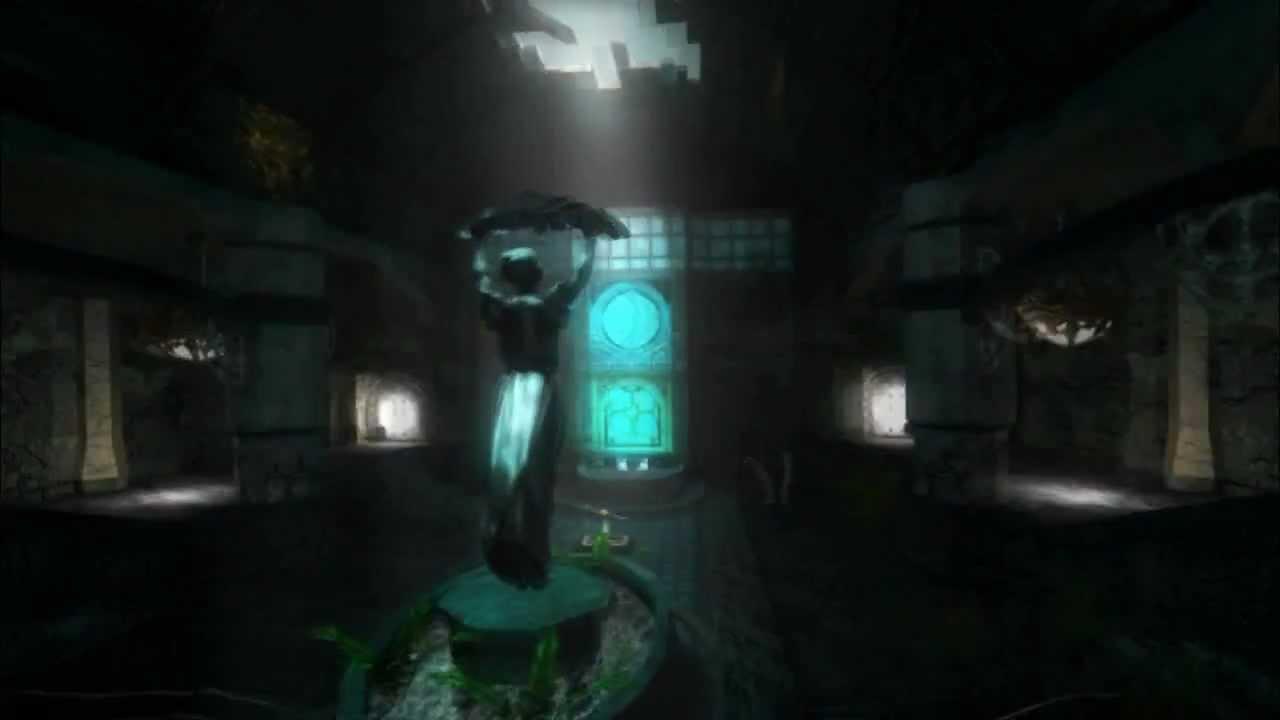
Before we go any further, please introduce yourselves to our readers.
Tell us something about your game development history; what do you do?
Did you work on any other project prior? How did you end up joining the team?
My name is John Diamond, otherwise known in the gaming world as "Irritant". I founded COR Entertainment in 1999. along with Chet Hamel and Charles Whitlock. Prior to that I had dabbled in a variety of Doom/Hexen mods which really got the ball rolling for me. Then Quake was released, and I along with Gustav Taxen, David Wallin and Sverre Kvernmo designed and produced "Alien Quake", the infamously "foxed" mod based on the Giger Alien universe. Following that unfortunate incident, David Wallin and I formed Team Reaction, which went on to create a variety of mods such as "Omen", "CodeRED", and "Gloom". I eventually left TR to focus on a complete redesign of CodeRED and Omen, with Chet and Charles coming along with me.
Eventually they left, and I worked alone while producing several titles under COR - "Alteria", "Destroy All Monsters", and the two CodeRED games "Battle for Earth" and "Martian Chronicles". I worked mostly alone, but did get the occasional assist with the codework, such as from Victor Luchits of Qfusion/Warsow fame. It was at that time that I started having interest in modernizing the engine, which at the time was a slightly modified Quake II based affair. Around that same time I formulated the idea for "Alien Arena". Currently I am still working on the code/engine, artwork, and overseeing the design and development as I have been for the last 10 years.
Let's start with the very beginning of 'Alien Arena': How was it created?
What was the main inspiration? How did it got to where it is? Where is it going?
The initial idea for Alien Arena was mine, in 2003. At that time I found myself playing a lot of deathmatch, mostly Quake 3, and some Quake 2 and UT2003. I killed a lot of hours doing that. :)
I had a strong interest building in creating a new project that was unlike all other, singleplayer focused games from my past. Originally the game was to be a deathmatch only game with characters and weapons based on famous cinematic aliens and monsters. This time I tried to do things right, and contacted the various film studios/copyright owners of the intellectual property I wanted to include, but was turned down. I still wanted to make the game, so I decided then to base it on the CodeRED universe characters.
The initial releases of the game were virtually unnoticed, but a few people began showing interest, particularly in the Linux community. Shane Bayer began the process of porting the engine to Linux, and by 2005 the two of us had completed the task. By now there was a small community building around the game, and more gaming media was beginning to take notice. Things really began to take off with the Alien Arena 2006 release, with the community growing and more people coming in to contribute to the game in various ways.
Late 2007 a Linux.com article reviewing the game, declaring it the "best" free FPS game, was Slashdotted. This lead to quite a bit of harsh (and rather petty, in some cases) criticism that nonetheless caused me to rethink some aspects of the game's design. I decided to reboot the game with a complete artwork makeover, going for a little darker, grittier style and theme. Following that, my attention (and that of the several coders that had come onboard) went to the engine. The goal was to create a totally modern renderer that visually could at least compete with idTech4.
Since that time, we completely rewrote the renderer, not just for visual effects, but also for speed. The result is an engine that not only boasts some great visuals, but runs much faster than most of the other idTech based game engines out there. This allows us to build worlds with greater detail than you see in similar free deathmatch FPS games, in a genre where frame-rates are at a premium.
As for the future of Alien Arena, we are still constantly improving the game engine, and tweaking the game. By large, Alien Arena is a mostly completed project, but we are working on something new called Alien Arena: Tactical. This game is a class based, team oriented mode that is a little slower in most aspects, but probably faster than your typical military-based shooter. It's more complex than games like Team Fortress that involve control points, and as expected, it pits Martians against Humans. Each level has an integrated base with multiple components, subcomponents, and defence systems that all interact with one another. The goal is to destroy the enemy's base, but doing so can involve planting and detonating bombs, other classes deactivating them, and total teamwork to achieve the goal. Some things are made to be a little more realistic (well, as realistic as you can in a world full of Martians and rayguns), and the movement has been changed to be more suitable to this type of game. We expect to release an Alpha demo of the game this summer (perhaps at Dreamhack). AA Tactical will be included in the full Alien Arena game package, but also there will be a standalone demo with a much smaller download size.
Care to give us some insights about the actual development process?
Do you have any organisation, schedules or a roadmap? What tools do you use?
Our roadmaps aren't really that, per se, but more of say after a release, we discuss what we want to accomplish in the next release, and the various parties responsible get down to the business of getting it done. In my mind, I always had/have a game plan, such as an artwork upgrade for certain things, or effects/improvements that need to be made to the engine. We generally don't have a hard "map", we like to be flexible and keep things pretty relaxed and loose. It's a little easier now since we have a mature game that has been around for a decade.
As for tools, I generally use a large variety, such as Blender, Corel Photopaint, Adobe Photoshop, MSVC, CodeBlocks, FilterForge, etc. Generally whatever can do the job the best for me is what I'll use, and of course depending on which platform I am developing/testing for at the moment.
So what can you tell us about the aesthetic of the game?
Are they withstand the test of time? Anything being done to 'modernise' the looks?
Visually, particularly the engine, we have progressed to a state that is quite a bit beyond idTech4, and maybe getting closer to Unreal Engine 3. Everything is now rendered and animated using GLSL (if available), and there are streamlined fallbacks if not, or if the user disables them. We have a variety of effects that few other free id based engines are doing, for example the sun lighting/shafts/shadow effects, and neat things like subsurface light scattering (seen on translucent fleshy objects). Some other little tricks like water/blood that drips down a wall and follows the contours of the parallax mapped surfaces, explosion "heatwave" distortions, are things I haven't seen done in many other free engines. We are the only idTech based engine doing ragdoll physics that I am aware of – many thanks to Lee Salzman of "Sauerbraten" fame for assisting with that task.
I think over time, we will always continue to improve the visual effects and rendering, and who knows what might be on the horizon... I think the screenshots on our website speak for themselves, but five years from now, you might see something that looks far better. Recently I've been increasing the polycounts of our player characters, now that the engine is animating and rendering everything in the GPU, so with that in mind you may see some artwork get remade or revamped down the road.
Seeing as it was built atop a heavily modified 'id Tech 2',
just how is the 'CRX game engine' holding out compare to the newer ones?
What are some of the more anticipated upcoming features?
Well I might have answered that in the previous question a bit, but I can elaborate some. I feel that there is work to be done to make it fully comparable to a modern commercial gaming engine, but the gap is closing – mostly because game engines have gotten to the point where you can only look so "real". We definitely have some areas that are deficient and need work, such as terrain rendering, GUI, and a few other effects. But, most of the key components are in place.
The renderer is no longer related to idTech2, really at all, other than that it still uses and parses the BSP map format. There are surely a few codebits left over from idTech2, but by and large the way things are rendered is completely different. Where we still have commonality is in the netcode, client and server structure, and game code. Some of this may be changing pretty radically in the future. Other areas might stay the same, if they are tried and true.
Now tell us about about when the game was first made cross-platform:
Did this have any impact on the future development cycle?
Did this have any (dis)advantages over how it was before?
As mentioned before, this took place in 2005, I believe it the process may have started in the winter of 2004 when Shane approached me about starting it. I think there were some advantages, as well as headaches, some that continue to this day, but many of those headaches lead to better and more optimized/compliant code. What really cannot be overlooked is how many more fans as well as developers were brought in by doing this as well. This in and of itself lead to a game that evolved and grew into something it never could have before.
Are there a lot of people playing 'Alien Arena' now?
How is it received by new players nowadays?
What about the broader gaming community in general?
There is a small, but very loyal community that plays the game today, many of them for a great number of years. The game's "heyday" in popularity was between 2008-2011, no question about it. Since then, it's no secret that the popularity of fast-paced deathmatch games in general has declined markedly, and Alien Arena certainly has felt that effect as have others. That is part of the reason for Alien Arena: Tactical - I have seen that the market is shifting, for some years, and it's high time Alien Arena offered something that fits more into today's demographics.
We do have a promotion team that is working very hard and getting us sponsored by companies such as Kingston, MadCatz, and Eizo. They also will be running a booth at this summer's Dreamhack for Alien Arena, and this will the game's third appearance there. The broader community is generally not very interested in Alien Arena, or deathmatch in general. However, it should be noted that the game has been downloaded over 2 million times, and most everywhere has received favorable ratings and reviews. I think, as time has gone on and we have improved the game from it's messy beginnings, the overall reputation/impressions of it have steadily improved in parallel.
And what about those who are interested in contributing something to the project?
How would they go about doing that? What is currently needed the most?
The best way to contribute is to join the community, and integrate yourself. Generally we are talking about a game that is pretty mature, so we aren't actively looking for contributors per se, but we are always open to contributions and assistance. I personally like to keep the development team small, I've seen too many projects wind up feeling disjointed and scattershot when too many fingers are in the pot, so to speak.
Lastly is there anything you'd like to tell our readers that I've overlooked?
The thing I'd like to say is that Alien Arena began as one man's vision, but quickly evolved into a community vision. The development team is part of the community, and the community has come up with so many great ideas over the years, it's difficult to even remember or list them all. The game that Alien Arena is today bears little to no resemblance to the game even from 2007, other than maybe the names of the weaponry. In the last two years alone, we have probably increased the rendering speed 500%, and the compatibility factor is much better.
For all those people who tried it out years ago and found it bland, or laggy, you might want to give it a try again. Lastly, thank you very much for the interview and interest in Alien Arena, and keep an eye out for AA Tactical, and beyond that, a complete remake of one of COR's original titles, Alteria.
Part II: link
Website: red.planetarena.org
IndieDB: link
Do remember that 'Alien Arena' is a free game which runs smoothly under any Linux machine. You can download it from many places listed on the main website red.planetarena.org, from Desura or PlayDeb.

YouTube videos require cookies, you must accept their cookies to view. View cookie preferences.
Direct Link
Direct Link
Before we go any further, please introduce yourselves to our readers.
Tell us something about your game development history; what do you do?
Did you work on any other project prior? How did you end up joining the team?
My name is John Diamond, otherwise known in the gaming world as "Irritant". I founded COR Entertainment in 1999. along with Chet Hamel and Charles Whitlock. Prior to that I had dabbled in a variety of Doom/Hexen mods which really got the ball rolling for me. Then Quake was released, and I along with Gustav Taxen, David Wallin and Sverre Kvernmo designed and produced "Alien Quake", the infamously "foxed" mod based on the Giger Alien universe. Following that unfortunate incident, David Wallin and I formed Team Reaction, which went on to create a variety of mods such as "Omen", "CodeRED", and "Gloom". I eventually left TR to focus on a complete redesign of CodeRED and Omen, with Chet and Charles coming along with me.
Eventually they left, and I worked alone while producing several titles under COR - "Alteria", "Destroy All Monsters", and the two CodeRED games "Battle for Earth" and "Martian Chronicles". I worked mostly alone, but did get the occasional assist with the codework, such as from Victor Luchits of Qfusion/Warsow fame. It was at that time that I started having interest in modernizing the engine, which at the time was a slightly modified Quake II based affair. Around that same time I formulated the idea for "Alien Arena". Currently I am still working on the code/engine, artwork, and overseeing the design and development as I have been for the last 10 years.
Let's start with the very beginning of 'Alien Arena': How was it created?
What was the main inspiration? How did it got to where it is? Where is it going?
The initial idea for Alien Arena was mine, in 2003. At that time I found myself playing a lot of deathmatch, mostly Quake 3, and some Quake 2 and UT2003. I killed a lot of hours doing that. :)
I had a strong interest building in creating a new project that was unlike all other, singleplayer focused games from my past. Originally the game was to be a deathmatch only game with characters and weapons based on famous cinematic aliens and monsters. This time I tried to do things right, and contacted the various film studios/copyright owners of the intellectual property I wanted to include, but was turned down. I still wanted to make the game, so I decided then to base it on the CodeRED universe characters.
The initial releases of the game were virtually unnoticed, but a few people began showing interest, particularly in the Linux community. Shane Bayer began the process of porting the engine to Linux, and by 2005 the two of us had completed the task. By now there was a small community building around the game, and more gaming media was beginning to take notice. Things really began to take off with the Alien Arena 2006 release, with the community growing and more people coming in to contribute to the game in various ways.
Late 2007 a Linux.com article reviewing the game, declaring it the "best" free FPS game, was Slashdotted. This lead to quite a bit of harsh (and rather petty, in some cases) criticism that nonetheless caused me to rethink some aspects of the game's design. I decided to reboot the game with a complete artwork makeover, going for a little darker, grittier style and theme. Following that, my attention (and that of the several coders that had come onboard) went to the engine. The goal was to create a totally modern renderer that visually could at least compete with idTech4.
Since that time, we completely rewrote the renderer, not just for visual effects, but also for speed. The result is an engine that not only boasts some great visuals, but runs much faster than most of the other idTech based game engines out there. This allows us to build worlds with greater detail than you see in similar free deathmatch FPS games, in a genre where frame-rates are at a premium.
As for the future of Alien Arena, we are still constantly improving the game engine, and tweaking the game. By large, Alien Arena is a mostly completed project, but we are working on something new called Alien Arena: Tactical. This game is a class based, team oriented mode that is a little slower in most aspects, but probably faster than your typical military-based shooter. It's more complex than games like Team Fortress that involve control points, and as expected, it pits Martians against Humans. Each level has an integrated base with multiple components, subcomponents, and defence systems that all interact with one another. The goal is to destroy the enemy's base, but doing so can involve planting and detonating bombs, other classes deactivating them, and total teamwork to achieve the goal. Some things are made to be a little more realistic (well, as realistic as you can in a world full of Martians and rayguns), and the movement has been changed to be more suitable to this type of game. We expect to release an Alpha demo of the game this summer (perhaps at Dreamhack). AA Tactical will be included in the full Alien Arena game package, but also there will be a standalone demo with a much smaller download size.
Care to give us some insights about the actual development process?
Do you have any organisation, schedules or a roadmap? What tools do you use?
Our roadmaps aren't really that, per se, but more of say after a release, we discuss what we want to accomplish in the next release, and the various parties responsible get down to the business of getting it done. In my mind, I always had/have a game plan, such as an artwork upgrade for certain things, or effects/improvements that need to be made to the engine. We generally don't have a hard "map", we like to be flexible and keep things pretty relaxed and loose. It's a little easier now since we have a mature game that has been around for a decade.
As for tools, I generally use a large variety, such as Blender, Corel Photopaint, Adobe Photoshop, MSVC, CodeBlocks, FilterForge, etc. Generally whatever can do the job the best for me is what I'll use, and of course depending on which platform I am developing/testing for at the moment.
So what can you tell us about the aesthetic of the game?
Are they withstand the test of time? Anything being done to 'modernise' the looks?
Visually, particularly the engine, we have progressed to a state that is quite a bit beyond idTech4, and maybe getting closer to Unreal Engine 3. Everything is now rendered and animated using GLSL (if available), and there are streamlined fallbacks if not, or if the user disables them. We have a variety of effects that few other free id based engines are doing, for example the sun lighting/shafts/shadow effects, and neat things like subsurface light scattering (seen on translucent fleshy objects). Some other little tricks like water/blood that drips down a wall and follows the contours of the parallax mapped surfaces, explosion "heatwave" distortions, are things I haven't seen done in many other free engines. We are the only idTech based engine doing ragdoll physics that I am aware of – many thanks to Lee Salzman of "Sauerbraten" fame for assisting with that task.
I think over time, we will always continue to improve the visual effects and rendering, and who knows what might be on the horizon... I think the screenshots on our website speak for themselves, but five years from now, you might see something that looks far better. Recently I've been increasing the polycounts of our player characters, now that the engine is animating and rendering everything in the GPU, so with that in mind you may see some artwork get remade or revamped down the road.
Seeing as it was built atop a heavily modified 'id Tech 2',
just how is the 'CRX game engine' holding out compare to the newer ones?
What are some of the more anticipated upcoming features?
Well I might have answered that in the previous question a bit, but I can elaborate some. I feel that there is work to be done to make it fully comparable to a modern commercial gaming engine, but the gap is closing – mostly because game engines have gotten to the point where you can only look so "real". We definitely have some areas that are deficient and need work, such as terrain rendering, GUI, and a few other effects. But, most of the key components are in place.
The renderer is no longer related to idTech2, really at all, other than that it still uses and parses the BSP map format. There are surely a few codebits left over from idTech2, but by and large the way things are rendered is completely different. Where we still have commonality is in the netcode, client and server structure, and game code. Some of this may be changing pretty radically in the future. Other areas might stay the same, if they are tried and true.
Now tell us about about when the game was first made cross-platform:
Did this have any impact on the future development cycle?
Did this have any (dis)advantages over how it was before?
As mentioned before, this took place in 2005, I believe it the process may have started in the winter of 2004 when Shane approached me about starting it. I think there were some advantages, as well as headaches, some that continue to this day, but many of those headaches lead to better and more optimized/compliant code. What really cannot be overlooked is how many more fans as well as developers were brought in by doing this as well. This in and of itself lead to a game that evolved and grew into something it never could have before.
Are there a lot of people playing 'Alien Arena' now?
How is it received by new players nowadays?
What about the broader gaming community in general?
There is a small, but very loyal community that plays the game today, many of them for a great number of years. The game's "heyday" in popularity was between 2008-2011, no question about it. Since then, it's no secret that the popularity of fast-paced deathmatch games in general has declined markedly, and Alien Arena certainly has felt that effect as have others. That is part of the reason for Alien Arena: Tactical - I have seen that the market is shifting, for some years, and it's high time Alien Arena offered something that fits more into today's demographics.
We do have a promotion team that is working very hard and getting us sponsored by companies such as Kingston, MadCatz, and Eizo. They also will be running a booth at this summer's Dreamhack for Alien Arena, and this will the game's third appearance there. The broader community is generally not very interested in Alien Arena, or deathmatch in general. However, it should be noted that the game has been downloaded over 2 million times, and most everywhere has received favorable ratings and reviews. I think, as time has gone on and we have improved the game from it's messy beginnings, the overall reputation/impressions of it have steadily improved in parallel.
And what about those who are interested in contributing something to the project?
How would they go about doing that? What is currently needed the most?
The best way to contribute is to join the community, and integrate yourself. Generally we are talking about a game that is pretty mature, so we aren't actively looking for contributors per se, but we are always open to contributions and assistance. I personally like to keep the development team small, I've seen too many projects wind up feeling disjointed and scattershot when too many fingers are in the pot, so to speak.
Lastly is there anything you'd like to tell our readers that I've overlooked?
The thing I'd like to say is that Alien Arena began as one man's vision, but quickly evolved into a community vision. The development team is part of the community, and the community has come up with so many great ideas over the years, it's difficult to even remember or list them all. The game that Alien Arena is today bears little to no resemblance to the game even from 2007, other than maybe the names of the weaponry. In the last two years alone, we have probably increased the rendering speed 500%, and the compatibility factor is much better.
For all those people who tried it out years ago and found it bland, or laggy, you might want to give it a try again. Lastly, thank you very much for the interview and interest in Alien Arena, and keep an eye out for AA Tactical, and beyond that, a complete remake of one of COR's original titles, Alteria.
Part II: link
Website: red.planetarena.org
IndieDB: link
Some you may have missed, popular articles from the last month:
All posts need to follow our rules. For users logged in: please hit the Report Flag icon on any post that breaks the rules or contains illegal / harmful content. Guest readers can email us for any issues.

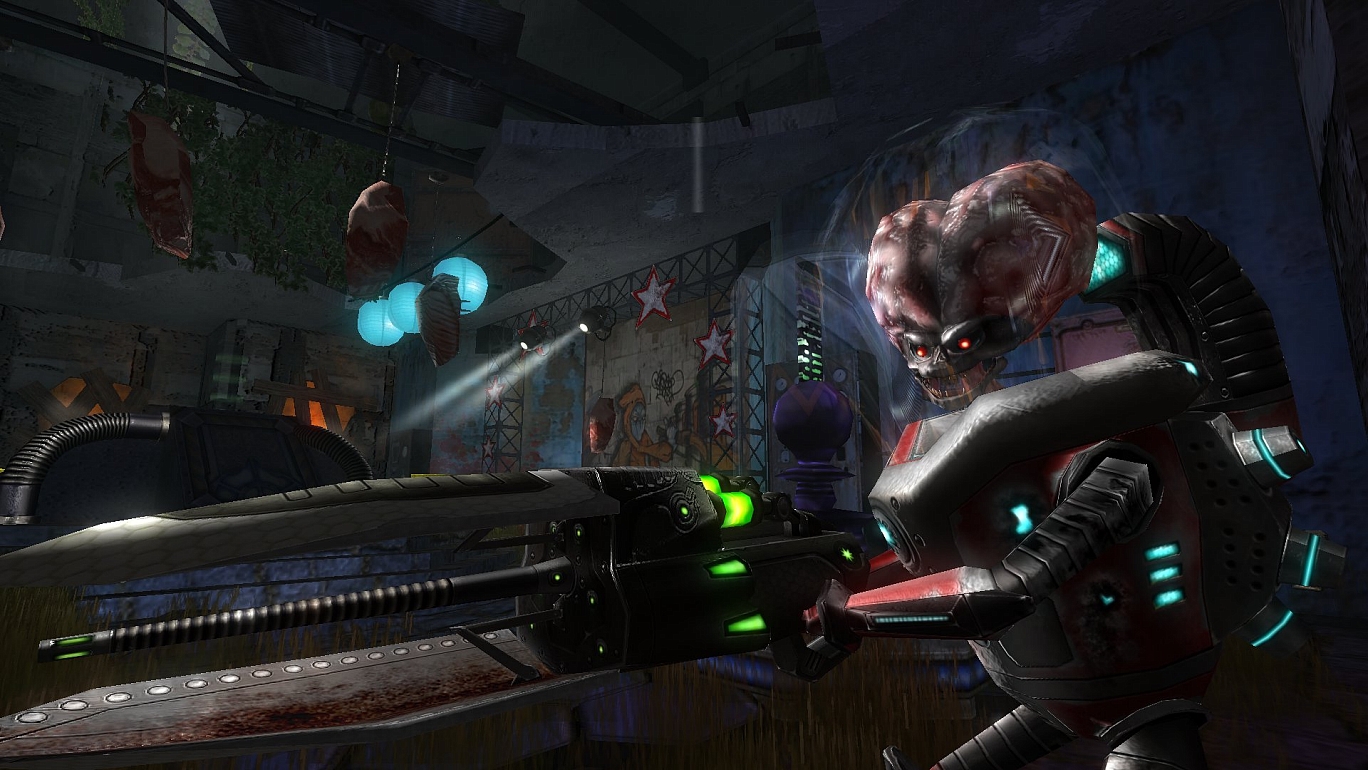
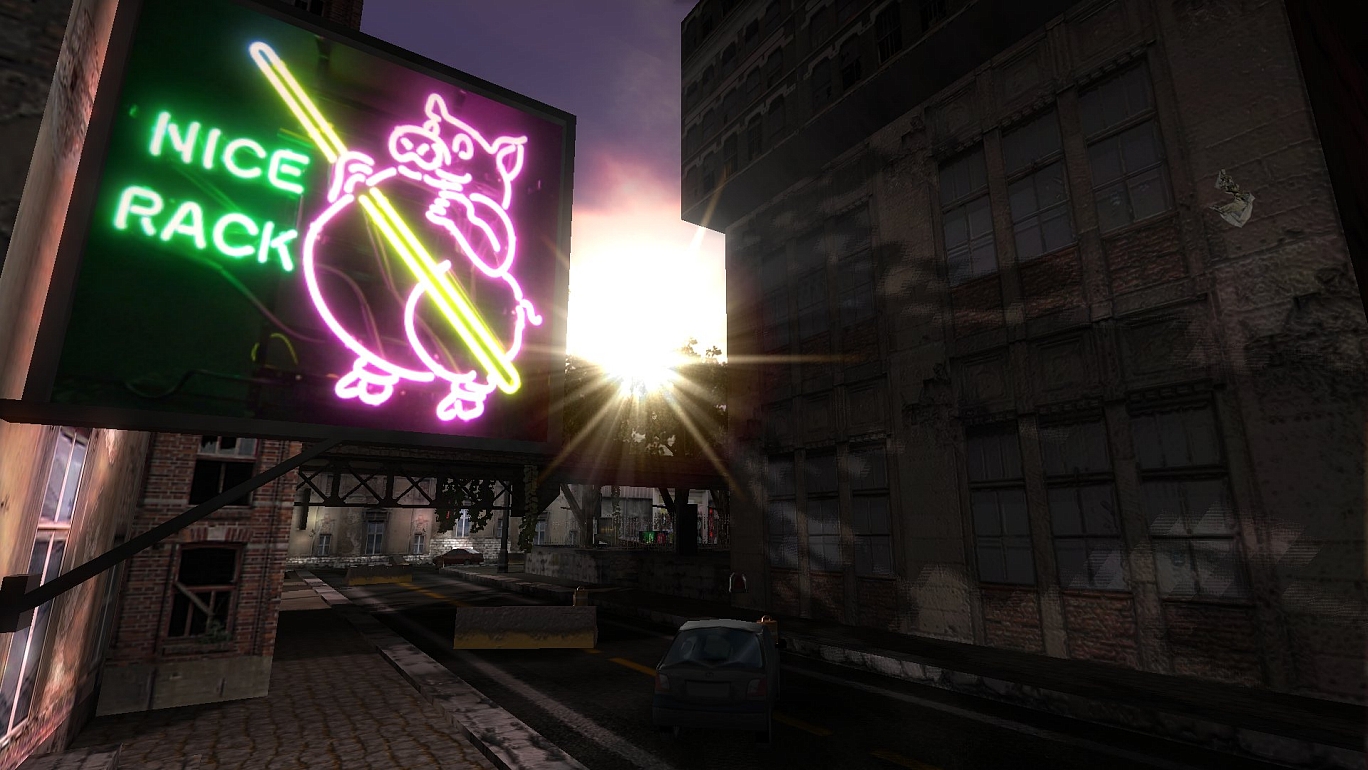
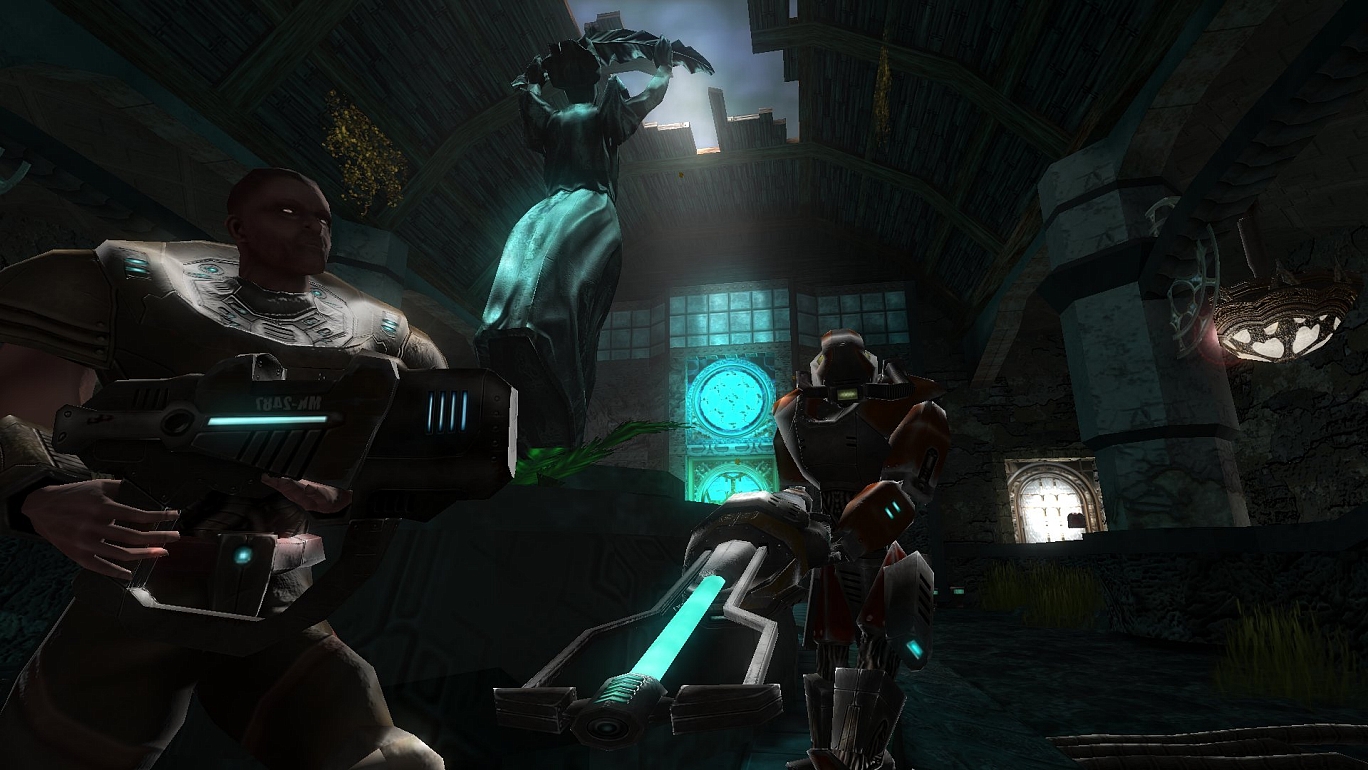
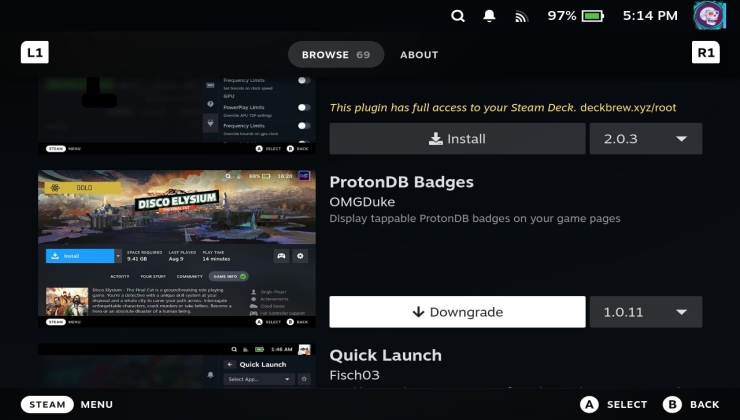
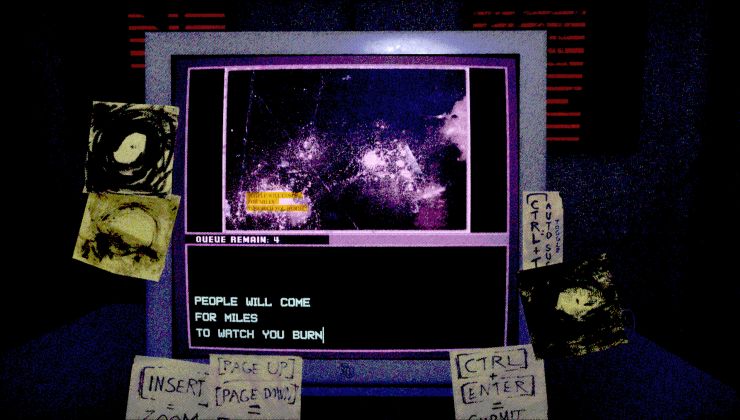
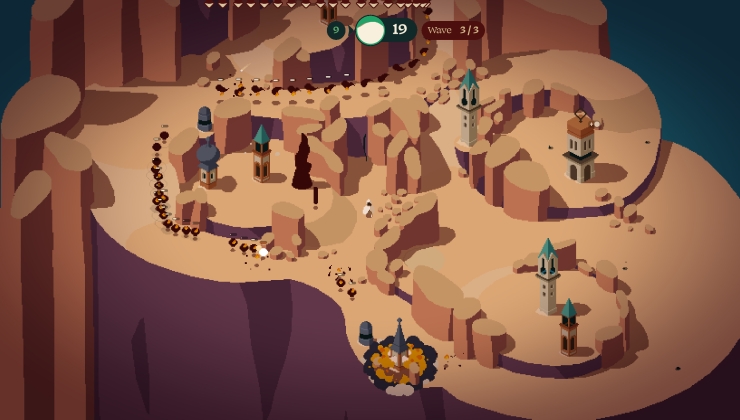

 How to set, change and reset your SteamOS / Steam Deck desktop sudo password
How to set, change and reset your SteamOS / Steam Deck desktop sudo password How to set up Decky Loader on Steam Deck / SteamOS for easy plugins
How to set up Decky Loader on Steam Deck / SteamOS for easy plugins
Other than that, I admire the effort very much and I wish John and his team the best for the future.
I'm making part of this not only community, but more like family of players and or contributors for over 2 years now... it has been such a great ride!!! It's never enough to say that as any open source project you'll find great people giving much more than only their precious time to deliver and achieve remarkable outcomes!
Alien Arena is by far my favorite game!! I'm waiting for newcomers in the Arena for some "Fragging" fun!:D
Mostly appreciated guys!!!
Uncle Caz.
They all (Alien Arena, Red Eclipse, Warsow etc) need even a really simple friends list (like steam only far simpler) where you can just invite/join a friend, all it needs to do is track the IP of the server they are on it's that simple. They already have all the joining code they can piggyback off of for when you manually join a server. They could make it far easier with small things like that.
But no they all seems to focus on "must make players run and jump higher/faster, must make this shinier, add more bloom!"
Alien Arena is one of the finest quake style shooters though that's for sure. I just got a bit tired of them a few years ago.
UI: You're completely right, which is why it'll be totally overhauled in the next release. And we mean that for real this time, so far the UI project alone has resulted nearly seventy commits to our repository. We're on top of it. :)
-Max E.
Starting to look pretty good!
-Max E.
The next project will be to up the size limits. We have all the groundwork in place, including the ability to change the coordinate encoding in the net protocol to accommodate bigger distances. We just need to add a protocol for the client and server to negotiate how many bytes per axis to use, based on the map size, so that legacy clients get kicked when a big map comes up.
"Yep. The radiant tools are great for getting the broad strokes of a layout done, but not so good for set dressing."
What about the actual map file format and the map compilation tools it requires.
" Finally, we've [moved lightmap data into external files](http://red.planetarena.org/forum/showthread.php?tid=423) so that lightmaps can be generated at much higher resolutions than allowed by the Q2 BSP format."
How about adopting a 100% real time lighting solution ALA idTech 4 or CryEngine 3 and doing away with light maps? Wouldn't that make iteration faster on the content side?
Keep in mind, from an iteration-speed standpoint, the "low-def" built-in lightmaps generally take under five minutes to generate on modern hardware with multithreading enabled, and that's frequently fast enough. And if you're willing to deal with completely flat lighting, you don't have to generate a lightmap at all, which is fine if you're working on layout and not lighting.
Their main limitations are:
The first problem is easily addressed with new auxiliary file formats and file format extensions, like the external lightmaps and higher-size BSPs we are working on.
The second is addressed with meshes, as mentioned before. We may even come up with a new type of mesh just for segments of terrain (this is not a promise. :))
The third isn't just a problem with BSPs, it's a genuinely difficult technical problem no matter what approach you do, although BSPs are especially unsuited to those sorts of maps. Luckily, small, tight indoor or semi-indoor maps composed mostly of artificial structures tend to work best for deathmatch, and BSP still performs very well for that case (that's what it was designed for.) But with Alteria, the RPG, we may have to do some technical soul-searching. :)
As for the GUI - yes, that is being worked on by Max, and he's doing a fine job. In fact, it's rather UE3-like in some ways. It's not that we've ignored it and just focused on "shiny, pretty" stuff. We can only address so many things at once. If we didn't do the shiny, pretty stuff, we'd be criticized on the game being ugly. Trust me, been there, done that. For the past year we've focused on rendering, and particulary the speed, to the point where we are the fastest rendering of any of the Quake-based engines.
The Physics - Like Max said, the Quake II physics were the among best physics of any arena-style FPS. We have made subtle changes and improvements along the way. We also have ragdoll physics(note, the ONLY quake based engine using them), using the ODE physics engine. So quite honestly, I'm a little perplexed by the question. Maybe if the specific deficiency was pointed out, it would be useful. As for how bullets travel out of the gun, again, that's a bit vague. Are you talking about how the chaingun is a hitscan type weapon? That's something that is particular to arena shooters, changing those to actual bullet projectiles would cause unnecessary server lag, and anger pretty much anyone who tried to play it. There is a reason that most, if not all arena shooters do it this way.
Map Format - The BSP format is somewhat limiting. We are implementing, as Max mentioned, things to remove some size restrictions to create much larger maps, but this would be more useful for AA: Tactical and Alteria than classic Alien Arena. The tendency of third party mappers is to make everything far too large and far to open, so maybe we are opening a real can o' worms here, I dunno :D Detail wise, there are really no limitations for us. Like Unreal, we tend to use static meshes for our intricate detail in heavy doses, probably far more than most of the other Quake-based shooters out there. The main deficiency we have right now is our terrain-rendering, and that's on the to-do list for sure.
Lighting - 100% real-time lighting doesn't make much sense for a game that relies on very good framerates. Of course we do a significant amount of real time lighting as it is, with shadowmapping, stencil volumes, etc, interacting with our sun and dynamic light objects. It's something we have considered though, and keep our eye on. But, for that, you are going to have to sacrifice visual quality, and that's not something I am personally too keen on.